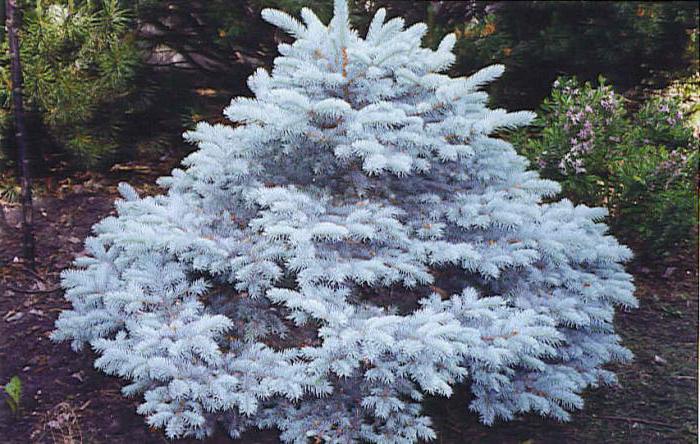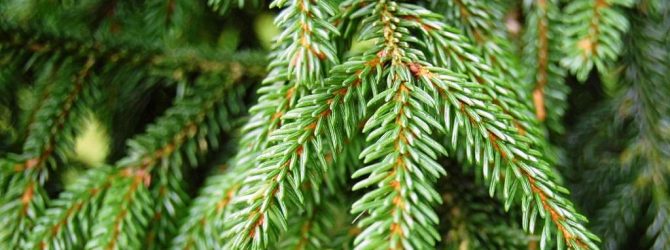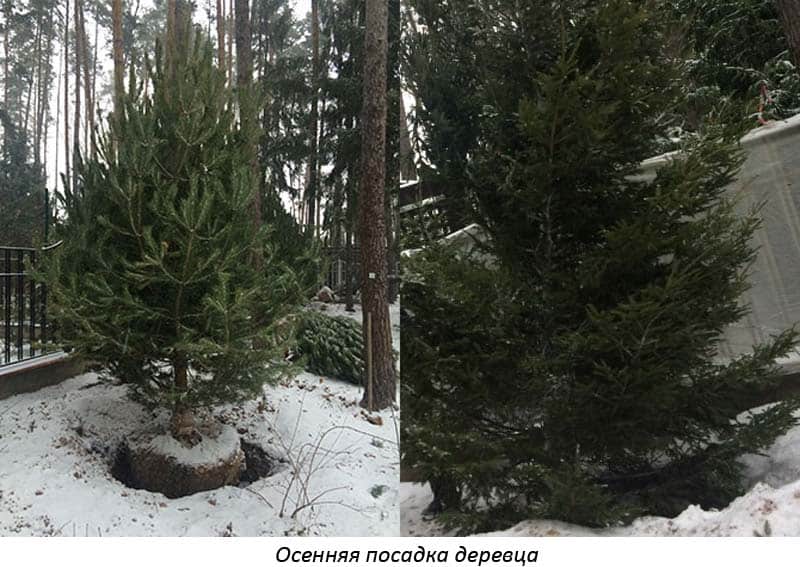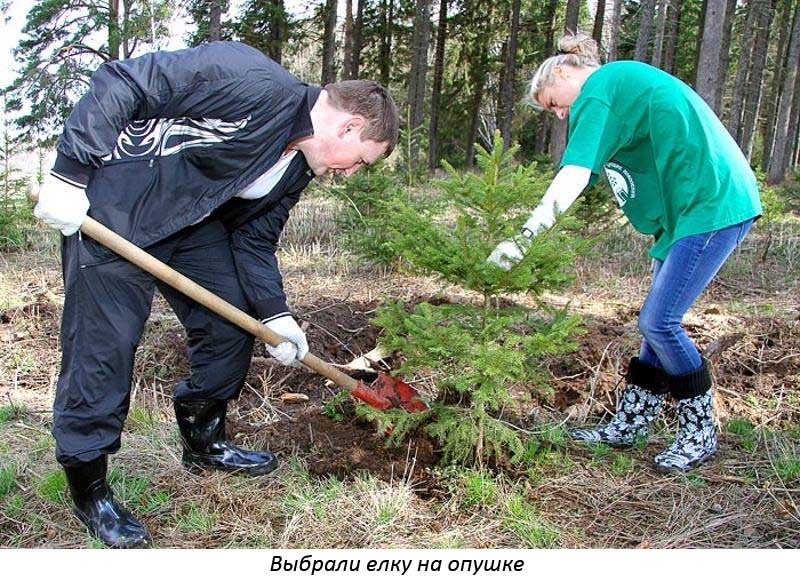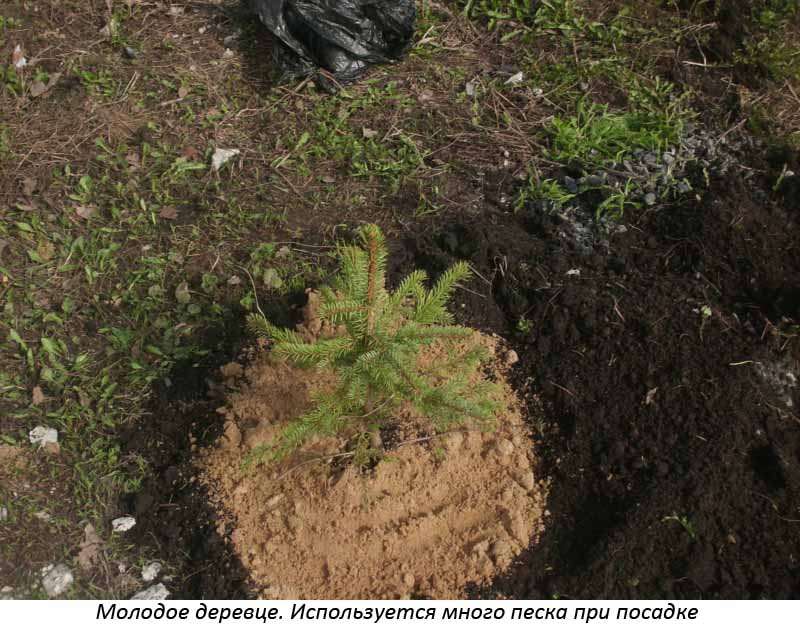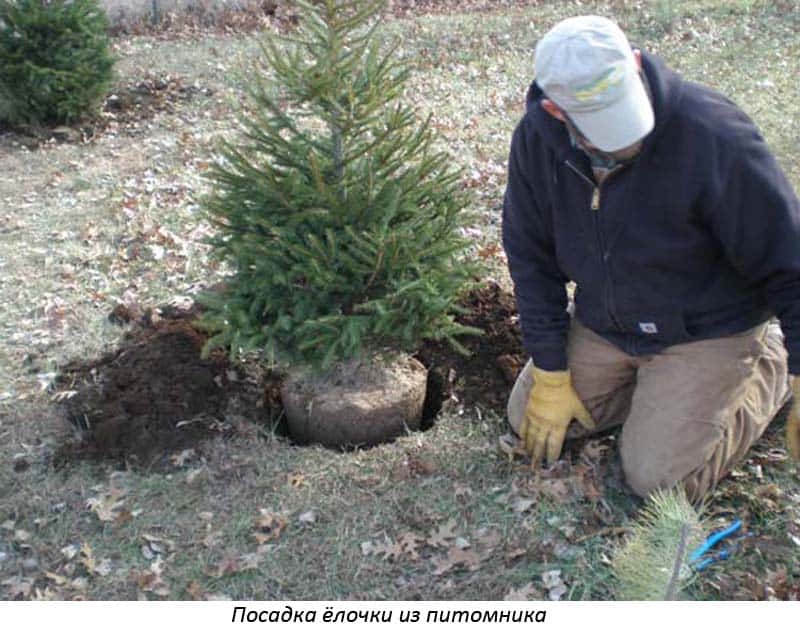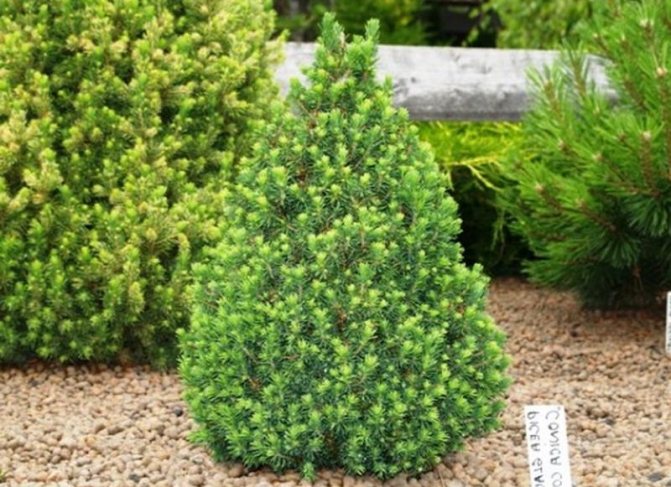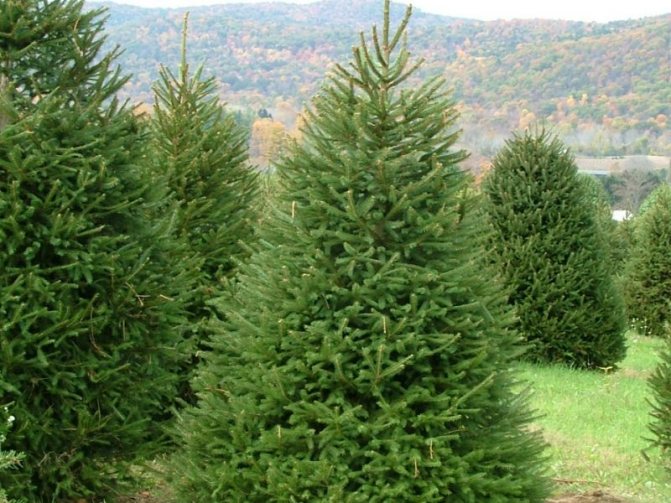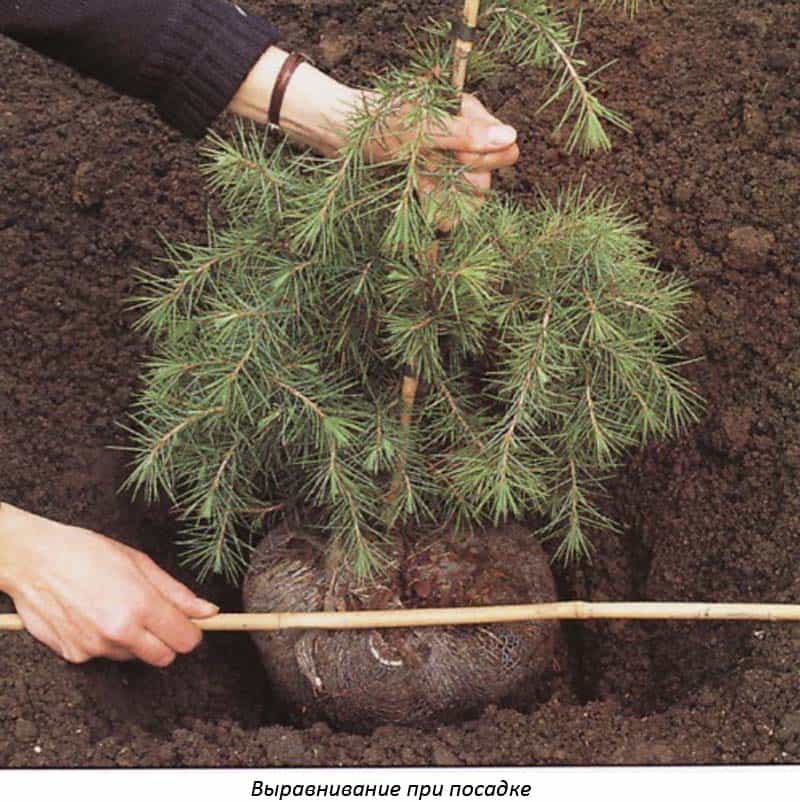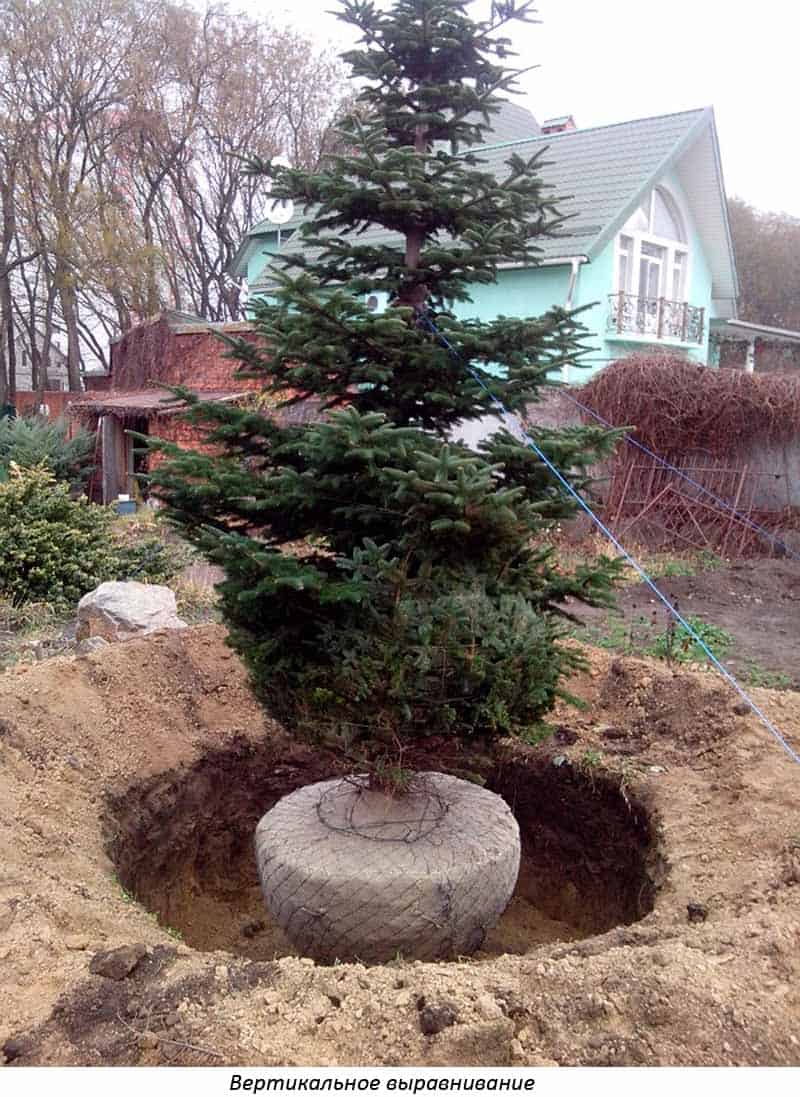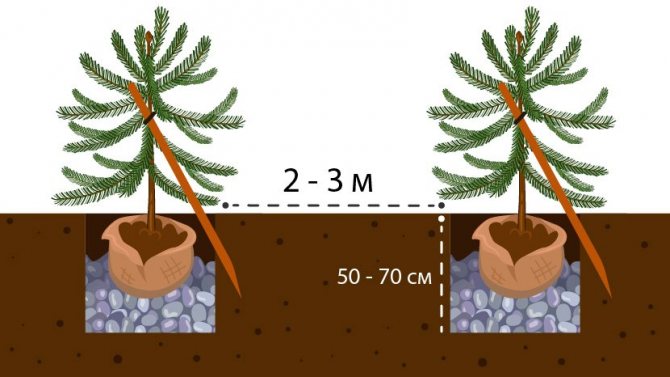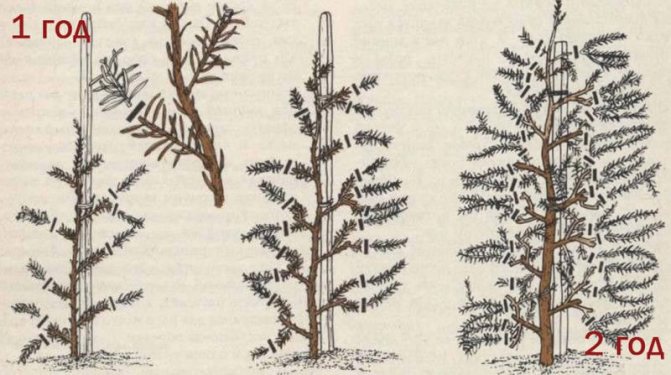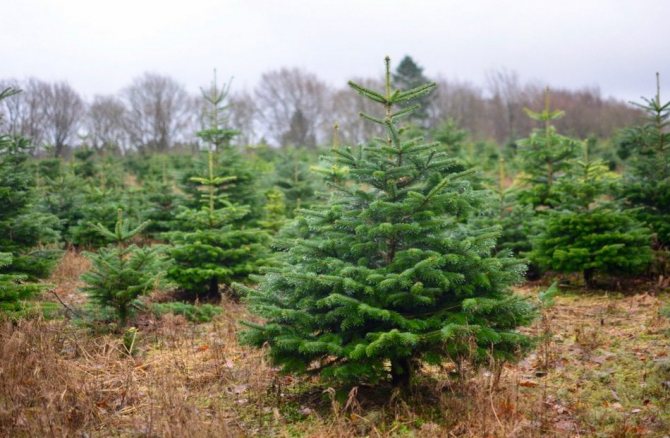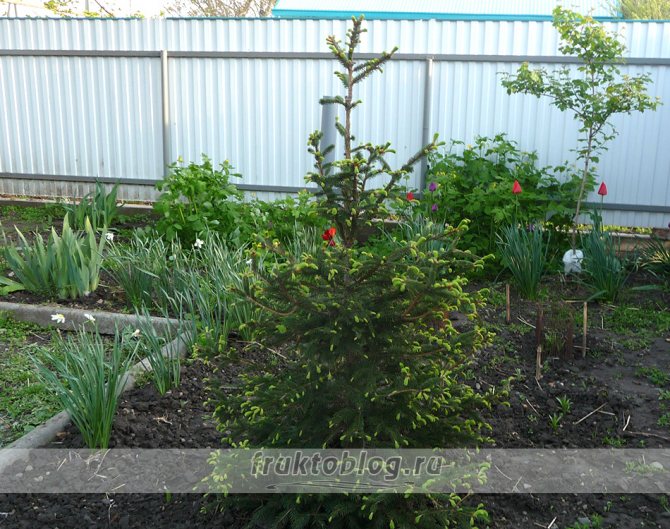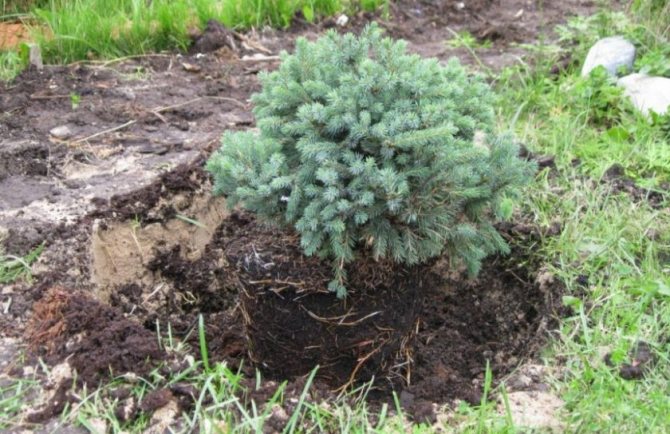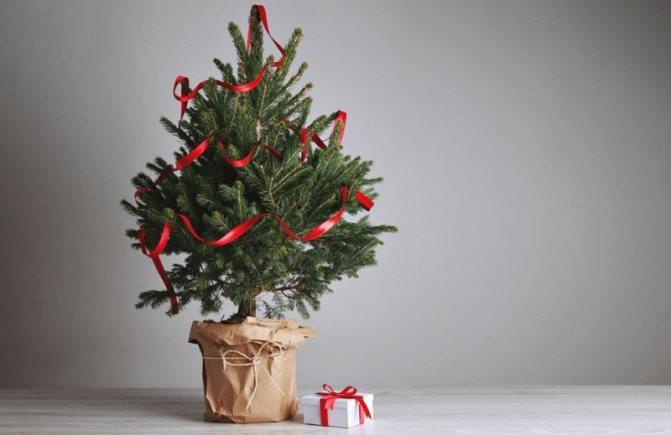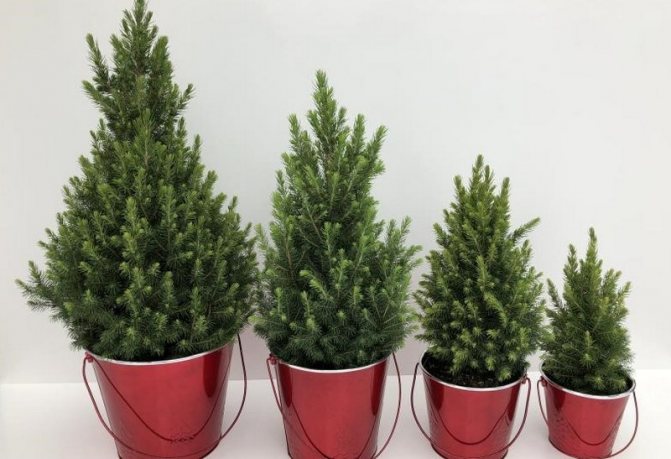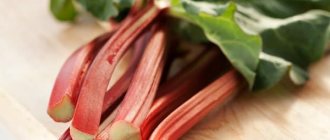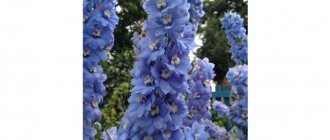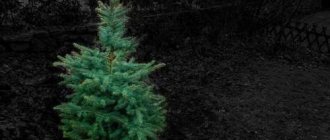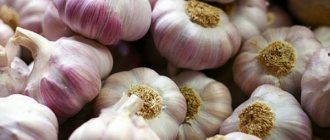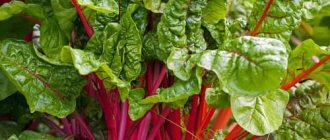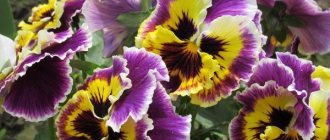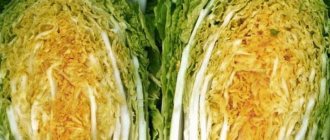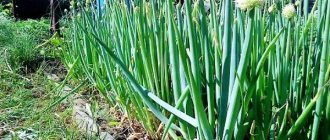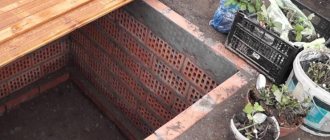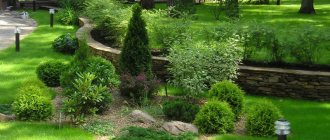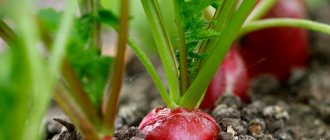When is it better to replant a spruce
In order for a young tree from the forest to take root safely, you need to choose the right time for transplanting. The success of rooting in a new place depends on the processes taking place in the root system.
The roots begin to grow vigorously in spring, and the vegetation process ends by the end of summer and beginning of autumn. It is ideal to replant the tree in early April, when the soil has already thawed, but intensive growth has not yet begun, and in mid-August.
Important! Trees 3 meters high and above can only be replanted during the winter months, with a frozen lump of soil around the root.
In the spring
Great time to land! True, conifers with open roots (as an option - with a lump of earth tied with burlap) are best purchased and planted as early as possible, before they grow. Ideally - immediately after thawing of the ground. Planting material grown in containers can be safely planted throughout the spring.
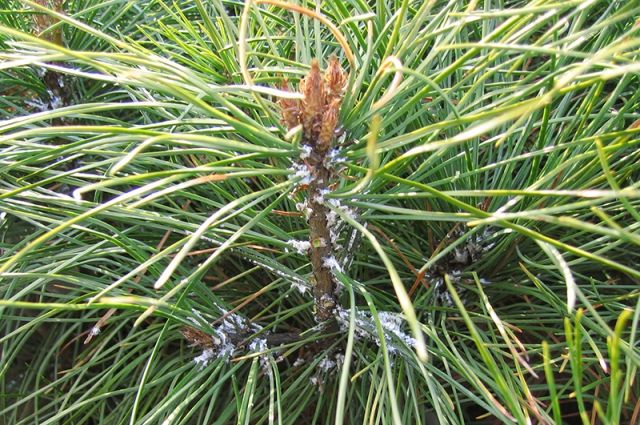
Can conifers be transplanted in the fall? More details
How to choose a good tree
In order for the plant to adapt without problems in the summer cottage, you need to correctly approach the choice of a seedling. The spruce must be young, strong and healthy. The experience of foresters confirms that free-standing trees that have grown on the edge, meadow, roadside, as a rule, have a stronger immunity and take root well in their summer cottage.
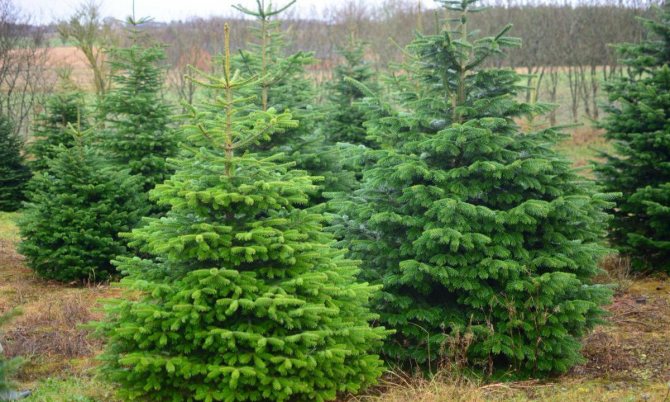

Young specimens, 50–100 cm high, with evenly growing symmetrical branches, healthy needles and a trunk are best suited for planting in the country. You need to carefully inspect the plant for damage and check if it has serious defects.
Preparing for winter
It should be noted that no additional protection is needed for adult blue firs. But small ones, half a meter high, need mandatory protection.
The bottom line is to protect the crown from breakage during heavy snow, as well as from direct exposure to the sun.
For snow, normal binding is fine. To do this, the branches are lifted from the bottom up, tied with a rope or pulled together with a net.
To protect it from direct sunlight, the tree is covered with a non-woven cloth.
In order for a blue spruce to look noble and delight the eye with its beauty, it is important to remember the basic rules for caring for it:
- Every spring, fertilizing should be done in the form of a mineral complex.
- Remove diseased branches, as well as prune for proper crown formation.
- In dry times, there should be regular watering and loosening of the soil.
Blue spruce is a fairly hardy coniferous plant that is grown not only to decorate the site, but also to protect it from the wind and the scorching sun. If you plant several trees nearby, it will look like a real fence, only coniferous.
Cutting off the tops every year, the coniferous fence will take on the appearance of a decorative thorny guard. How to plant a blue spruce on the site, see the advice of an experienced gardener in the following video:
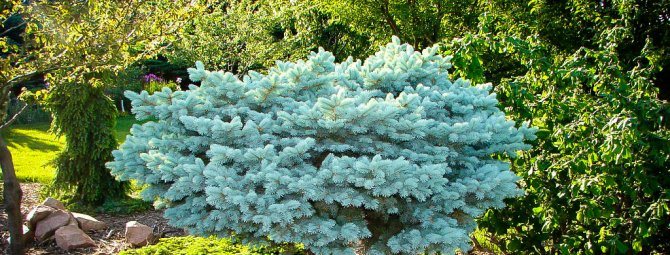

- Type: conifers
- Full-bloom Period: June
- Height: 25-30m
- Color: green, bright blue
- Perennial
- Hibernates
- Shady
- Drought resistant
Among all the variety of conifers, blue spruce is considered an elite plant, as it has an amazing color, lush needles and a solid appearance.No wonder she more often than other representatives of her species flaunts near Government Houses, banks and other institutions that are of considerable importance for the city. Therefore, summer residents increasingly want to grow their own specimen, especially if the territory allows. The prickly beauty is used as a tapeworm, making a kind of accent on the site. And in winter, she becomes the main heroine of the New Year holidays, shining with garlands and lights. But buying a blue-blooded Christmas tree is expensive, so many owners try to propagate it with seeds from cones or cuttings. Let's figure out how to grow a blue spruce from seeds and cuttings.
What you need to transplant a tree
In order for the spruce transplant to take place correctly and easily, you need to prepare.
The process will require:
- garden shovel;
- a piece of cotton cloth, 1 m² in order to wrap the root;
- colored tape for marks on the tree trunk;
- canister of water (10 l);
- large bag or soil bag;
- rope to tie the seedling during transportation.
It is better to dig a hole on the site in advance in order to plant a tree immediately after transportation.
Did you know? A unique multi-stemmed spruce grows in the Komi Republic; according to preliminary estimates, 11 stems grow from one root.
Digging process
When a coniferous beauty has been selected for transplantation, you can start digging it out. Care should be taken in the process so as not to damage the tree.
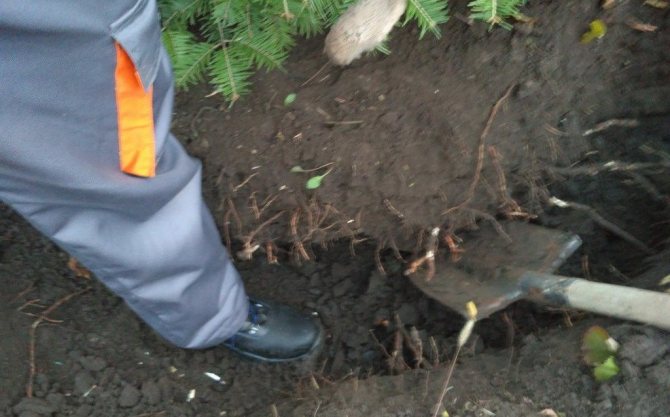

Extraction involves several stages:
- Water the plant under the root to soften the soil and make digging easier. After watering, you need to wait at least half an hour for the water to be absorbed.
- In parallel with the previous stage, it is necessary to mark the tree trunk with a small piece of electrical tape or colored tape: it should be noted which side of the trunk is facing south and which side is facing north. This is necessary in order to plant a tree in the country in the same way as it was located in natural conditions.
- Mark the area around the trunk, departing from it 50–70 cm. This can be done with a shovel, digging a small depression in a circle. If the height of the tree is higher than 1 meter, then the indent should be greater, not less than 1 meter.
- Gradually deepening the dug moat, remove the plant from the soil along with a large earthen clod, carefully lift and place the fabric prepared in advance under it. Wrap the root and tie the ends. The tree is now ready to be transported to a new location.
Important! Young spruce adapts better to new conditions if you take a little soil from its habitat and add it to the pit when planting on the site. It is recommended to remove the top, most fertile layer.
Preparing planting material
Seed preparation
Growing any spruce, not only blue, begins with harvesting seeds. At the end of summer, look in advance for a suitable blue spruce, the color and shape of which you like best. Check if the tree has formed cones. If they are, wait for the November cold snap and in the first decade of the month pick as many cones as possible from the selected plant. The more seeds you have, the more likely you are to grow a blue specimen.
Only 30-40% of young Christmas trees that sprout from one tree will have exactly the same color as their “ancestor”. The rest can be blue-green, or even green, like ordinary spruce. This is the problem of seed propagation, in which the traits of the mother plant are much less inherited than with cuttings.
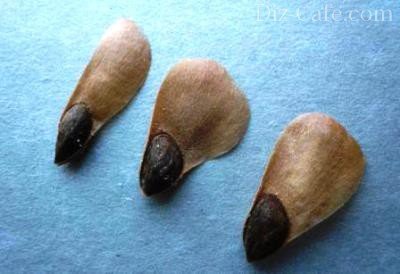

Seeds of blue spruce have a translucent impeller that helps them fly further, but when planting at home, you can remove it by brushing it off with your hands.
You can also collect in February, if you are late in the fall. But then it will have to be planted at the end of June. And this option is only suitable for areas with cool summers. In the heat, the seeds burn from the temperature.
The most difficult thing is to climb the tree, because the cones grow in the upper part of the crown. Tear only tight, completely closed bumps. You can, of course, look under the trees, but it will be difficult to find an unopened specimen.
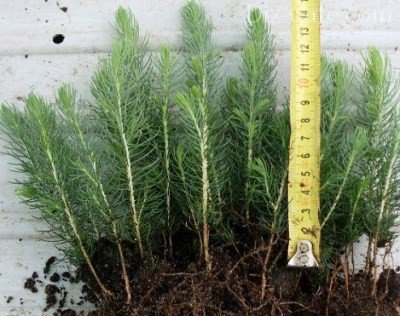

No more than 30 percent of blue seedlings will grow from seeds sprouted at home, so you can only select the most beautiful ones in a year.
Laying to reveal flakes
Take the collected material to a warm room, where the cones have to ripen, open up and give up their seeds. In nurseries, the opening of cones occurs in a couple of days, since they are placed in a bunker with a temperature of 40-42 degrees and kept there until the scales open. But in an apartment, it is difficult to recreate such a climate, and it is not necessary. It is enough to put the cones in a narrow cardboard box and put them on the radiator.
Those who do not have batteries - put it on a heated floor or take it to the kitchen and hide it at the top on the highest cabinet. The temperature is always higher under the ceiling, so the ripening process will go faster. During drying, you will hear the crackling of the scales. When the bump is fully open, shake out the seeds by tapping the "nose" on a hard surface.
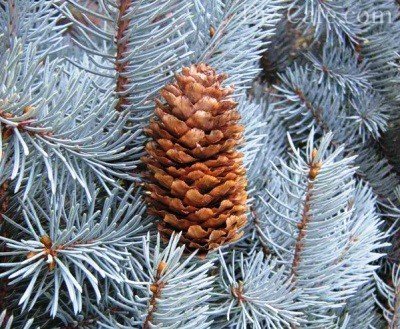

In an open or half-open cone, there will be almost no seeds, since they will have time to spill out on the ground, so look for cones with tightly closed scales
You can also buy seeds from the nursery instead of collecting them. But choose a trusted company, as the seeds can be stale, stored in warehouses for many years, and the germination rate will be weak. The best option is 1-2 year old seeds.
Stratification, aka hardening
Under natural conditions, cones on spruce open up by January. Seeds fly in the wind to put roots in new places. Until April, they lie under the snow and undergo a hardening process called stratification. At home, you will have to provide the seeds with such hardening so that the plants grow together and have good immunity.
If the winter turned out to be snowless, then divide the collected seeds into 2 parts and sow one of them immediately into the open ground. They will be covered with snow, and the hardening process will take place naturally. Christmas trees are not sown on the snow cover. Sprout the second part at home, and then compare which entrances were more friendly.
How to stratify seeds at home:
- Make a 1% solution of potassium permanganate (per 100 ml of water - 1 g. Potassium permanganate).
- Submerge the seeds in it and disinfect for 2-3 hours.
- Place the seeds on a towel or paper and pat dry.
- Pour into a linen bag.
- Place the pouch in a glass jar, close and place on the coldest shelf in the refrigerator
- In this form, let the future Christmas trees sleep until spring (and with the February gathering - until the 20th of June).
Transporting the tree
To safely deliver the dug out spruce to your personal plot, you need to follow the simple rules for transporting seedlings:
- preserve the earthen lump and ensure its integrity with a damp breathable fabric (cotton, burlap);
- tie the branches of the plant with a rope, slightly pulling them to the trunk to avoid damage;
- transported on a horizontal or inclined surface so as not to damage the barrel;
- transport as quickly as possible so that the tree loses a minimum of nutrients.
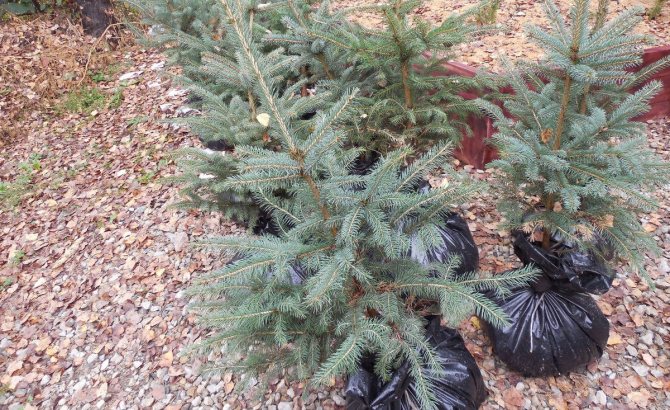

Description spruce blue
Blue spruce, or prickly spruce, is the most beautiful slender tree with a regular conical shape. For thirty years, it grows to fifteen meters. The branches are at right angles to the trunk. It seems as if nature itself worked to create such an amazing shape of this tree.
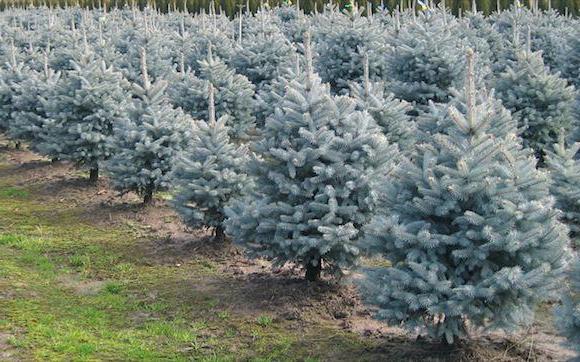

Blue spruce blooms from May to late June. Coniferous branches, painted in a rich blue-green color, turn it into an ornamental plant, making the tree a decoration of the garden. As the branches grow, they turn silvery-blue.New Year and Christmas are not complete without this beauty. Blue spruce will be a great attribute of fun. She will be able to create an atmosphere of magic and a festive mood. You can even buy a seedling to grow a spruce on your site, even for a novice gardener. The tree is not demanding on moisture and soil. It is quite frost-resistant. Air pollution is not dangerous for him. In many cities of our country, blue spruce grows to the delight of the owners.
Selecting a place for a transplant
Perhaps the most crucial moment is the choice of a place on the garden plot where the forest spruce is to be planted. Before deciding where the tree will look beautiful and appropriate, you need to familiarize yourself with the basic rules of agricultural technology.
Conifers are very unpretentious to the composition of the soil. They grow best on sandy soil, but they feel quite good both in black soil and on loam. The most important requirement is good drainage, since stagnant water is detrimental to the roots of the spruce.
Planting process
So, the place has been chosen, then another serious task follows: to transplant the plant, providing it with optimal conditions for growth.
It has already been said above that the landing pit must be prepared in advance. Usually, for young trees, a hole is dug with a diameter of 70 cm and the same depth, drainage is poured on the bottom and a little water is poured so that the soil softens.
Find out how long the spruce lives.
The brought seedling, together with the burlap, with which it is tied, is placed in a hole and sprinkled with earth. After installing the root, the tissue must be untied and left in the thickness of the earth: over time, it will naturally decay, but for now it will retain the usual environment for the roots. Together with the soil, the soil brought from the forest is poured into the pit.
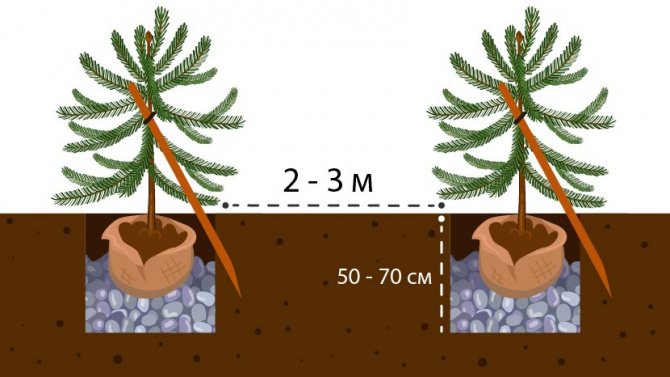

After planting, the tree is watered, the trunk circle is mulched with needles (in its absence, ordinary sawdust can be used). Watering in the first weeks, while the tree takes root, is carried out regularly, without waiting for the soil to dry, pouring 10 liters of water under one plant. It is important to take into account that the spruce should be watered not under the base of the trunk, but in a circle, at a distance of 30–40 cm from it.
Video: Transplanting spruce from the forest to the site
How to transplant a tree from a forest to a pot. How to plant a Christmas tree from the forest
It is not always possible to buy a spruce, sometimes it is dug up in the forest, however, in order for such a tree to grow on the site, it is important to choose the right plant. So the trees on the outskirts of the forest, which reach a height of one and a half meters, will be optimal.
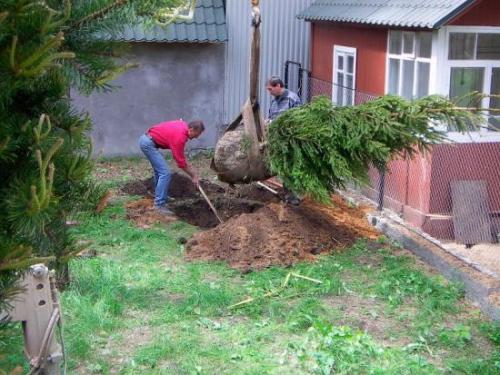

In order for the tree to grow and develop normally, the transplanting process must obey a number of rules. If they are observed, problems will be minimized.
So it is recommended:
- Under the selected tree, dig a circle along the diameter of the lower branches to a depth of half a meter.
- After that, you need to start carefully digging up the roots. At the same time, be sure to mark with ribbons where the tree had the north and where the south side.
- The latter is especially important when planting, helping to reduce stress on the tree;
- After the tree has been dug out, fill the bag with the native soil of the spruce;
- When it is delivered to the site, start preparing the pit, which should correspond in size to the land coma;
- At the bottom of the pit, be sure to pour the forest soil native to the tree;
- Carefully place the roots in the dug hole, make sure that the roots do not curl or break, if this happens - expand the edges of the hole;
- Make sure that the location of the branches corresponds to the south and north. Sprinkle the roots with the rest of the forest soil, moisten with fertilizer and water abundantly.
The main care for a young seedling is regular and abundant watering. The earth should not dry up, this can lead to his death.


